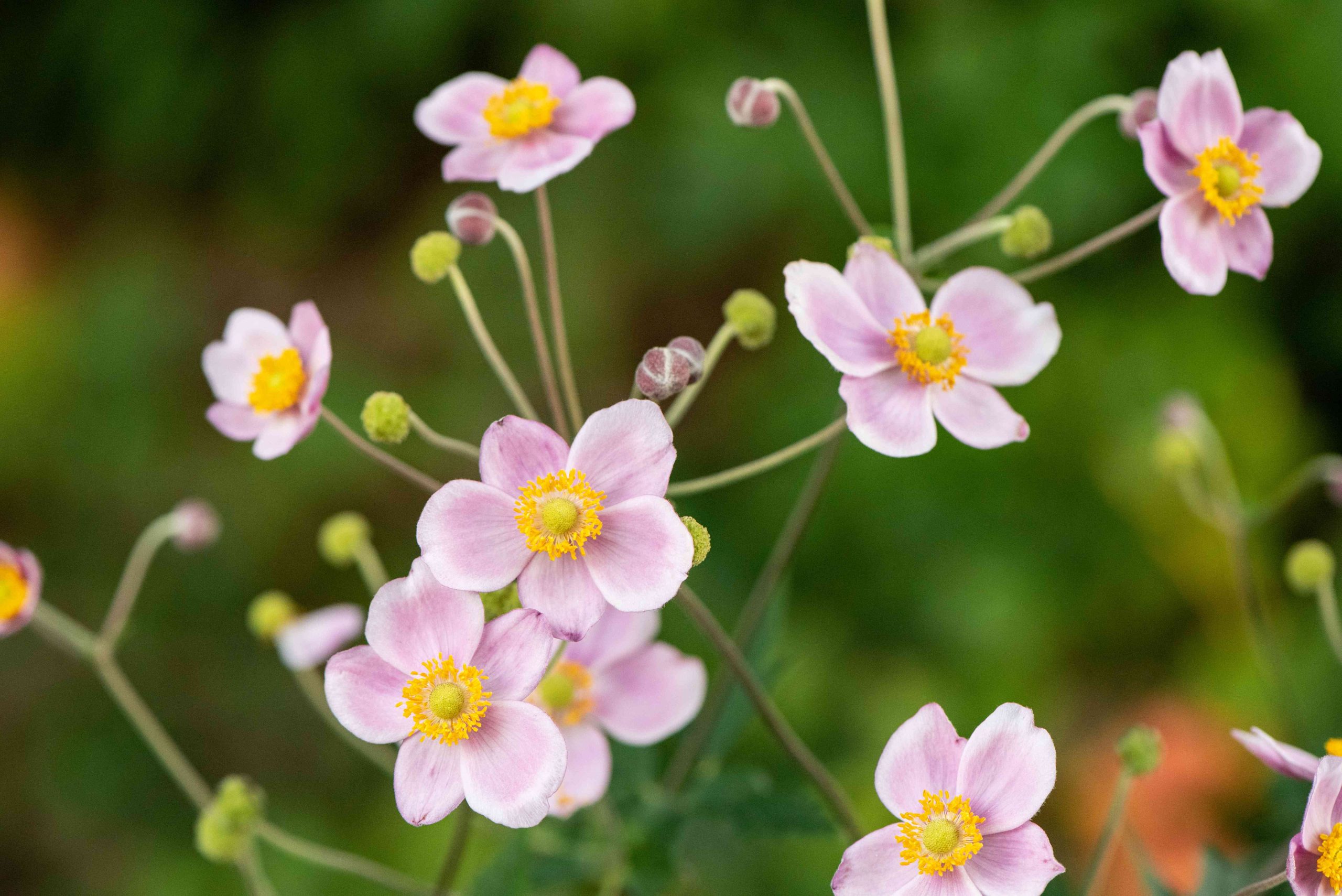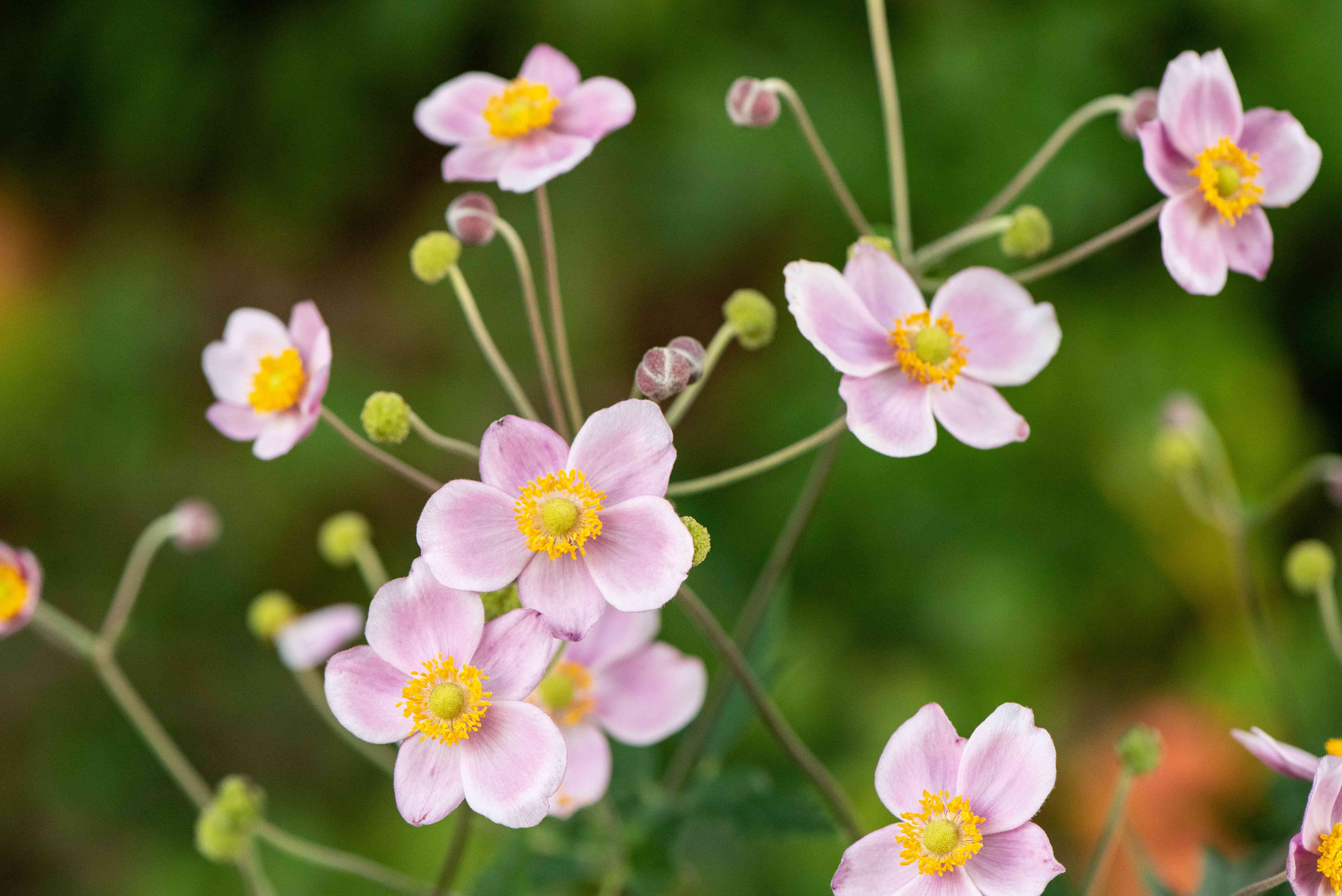

You may know anemones as ‘windflowers’; the common name given to these delicate, pastel flowers that rise above basal foliage on multiple slender stems. Anemones grow and spread from tubers blooming in spring, summer, and autumn, depending on which of the 150 species you’ve chosen to grow.
Planting the tubers is similar to planting bulbs of other flowers like daffodils, tulips, and calla lilies. Follow this guide and learn how to plant anemones for a bit of whimsy in the garden all season long.
When to Plant Anemone Bulbs
When to plant hinges on your growing zone, climate, and the anemone variety. Tubers are relatively small and somewhat fragile. They are vulnerable to rot during winters with continuous freeze/thaw cycles and do not tolerate wet soil.
Anemones also thrive in cooler conditions with temperatures between 58°F and 65°F during the day and lower at night. In USDA hardiness zones 8 to 11, they are often successful when planted in September or October. In zones 2 to 7, with widely fluctuating temperatures or wet soil, you may have better luck planting in March or early April.
Often thought of as spring flowers, some varieties do bloom in autumn. It’s important to know the bloom time of your variety because this helps determine when to plant.
As a general rule of thumb, plant spring-blooming anemones in autumn and autumn-blooming anemones in spring. Summer blooming varieties can be planted in early spring.
Want more gardening tips? Sign up for our free gardening newsletter for our best-growing tips, troubleshooting hacks, and more!
How to Plant Anemone Bulbs
Choose a garden spot with organically rich, well-draining soil and one that receives six hours of sun daily. Some types will thrive in partial shade but need a minimum four hours of exposure. Grab your garden gloves, a pail of water, and a hand trowel, and follow these steps:
- Soak anemone tubers in room temperature water for three to four hours or according to instructions that come with your purchase. Sold in dehydrated form, they appear shriveled and will expand to up to twice their size after soaking. Do not leave them in water too long which can cause them to rot.
- Prepare a planting bed by adding compost and balanced organic fertilizer. Bone meal is a good source of nutrients for these plants.
- Dig holes 2 to 3 inches deep.
- The number of tubers to plant in one hole and the distance between holes are variety-dependent. Check for relevant information in your packaging or ask nursery staff about specific instructions for your anemone variety. Multiple tubers can be planted 1 to 3 inches apart in groups of seven to 12 in holes spaced 12 inches apart. Other types may need to be planted singly and spaced up to 9 inches apart.
- If the variety has an identifiable pointed end, place tubers with this end pointing up. Orientation, though, isn’t critical and they will sprout and flower regardless of how the tuber is planted.
- Cover tubers with soil and water them.
How Often to Water Anemone Bulbs
After planting, water the tubers well. When they are set out in autumn, winter weather does the work of keeping the tubers plump and moist to slowly generate root development. When planting tubers in spring, water needs are moderate at about one inch per week.
Grown in moist, well-draining soil these plants may not require regular watering, but it’s okay to irrigate if rainfall is less than an inch a week or you experience an extended dry spell. Flowers in pots may require weekly watering.
Overwatering is the greater issue for anemones since they rot easily in soggy soil.
Tips For Growing Anemones
Anemone care can vary widely depending on the species.
- Follow care instructions that come with purchased bulbs, ask your nursery grower, or do some research to learn specific planting, soil, and water requirements for your anemone variety.
- Anemones are most attractive in groupings but it’s important to follow instructions for planting depth and spacing for your variety.
- Some types can grow to 4 feet tall and may require staking. Other shorter varieties work well at the front of the flowerbed.
- After the bloom period ends, spent flowers can be removed at the base of the stem. Leave foliage, which feeds the tuber, until leaves die back naturally after a hard frost.
- A layer of mulch protects against harsh winter weather. Maintaining consistent soil temperature and moisture helps protect tubers and roots from damage caused by repeated freezing and thawing.
FAQ
-
Yes. Anemone tubers are sold in dehydrated form and must be rehydrated in order to grow. The amount of soaking time may vary so ask or look for instructions that come with your tubers. Use lukewarm or room temperature water and do not oversoak which causes the tubers to rot.
-
Larger tubers may exhibit a pointed end which can be planted up but no matter how you place them in the ground, anemones will sprout leaves and flower.
Get the best products from Amazon








